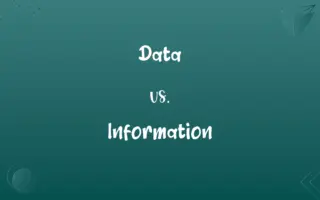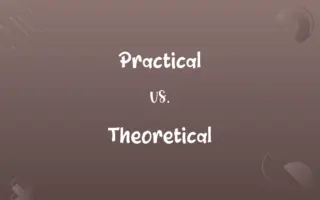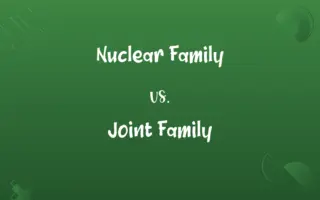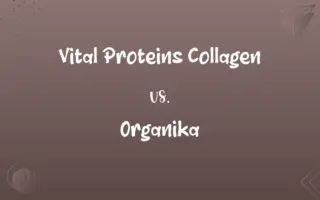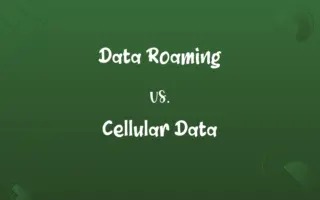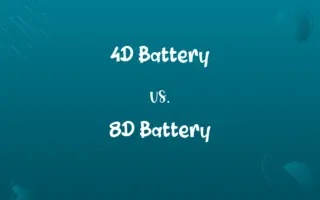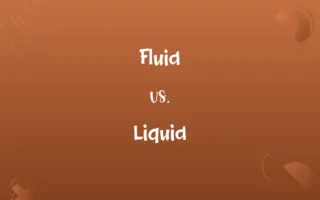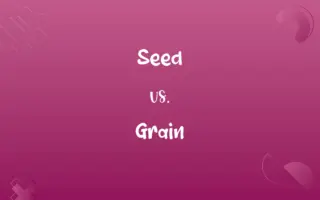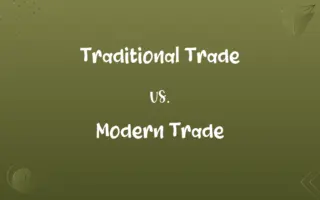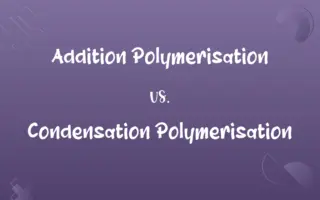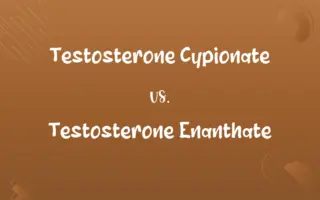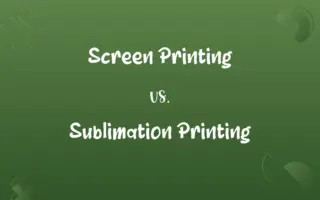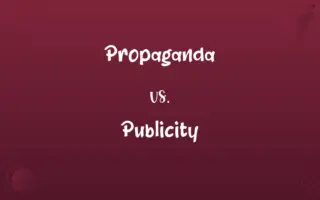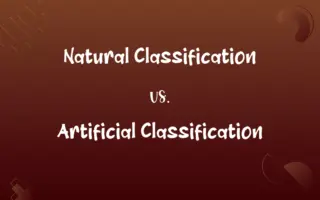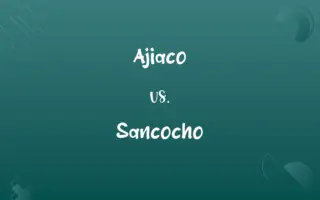Inorganic Carbon vs. Organic Carbon: Know the Difference

By Shumaila Saeed || Published on January 18, 2024
Inorganic carbon is carbon found in compounds not associated with living organisms, while organic carbon is carbon within compounds that are part of or produced by living organisms.
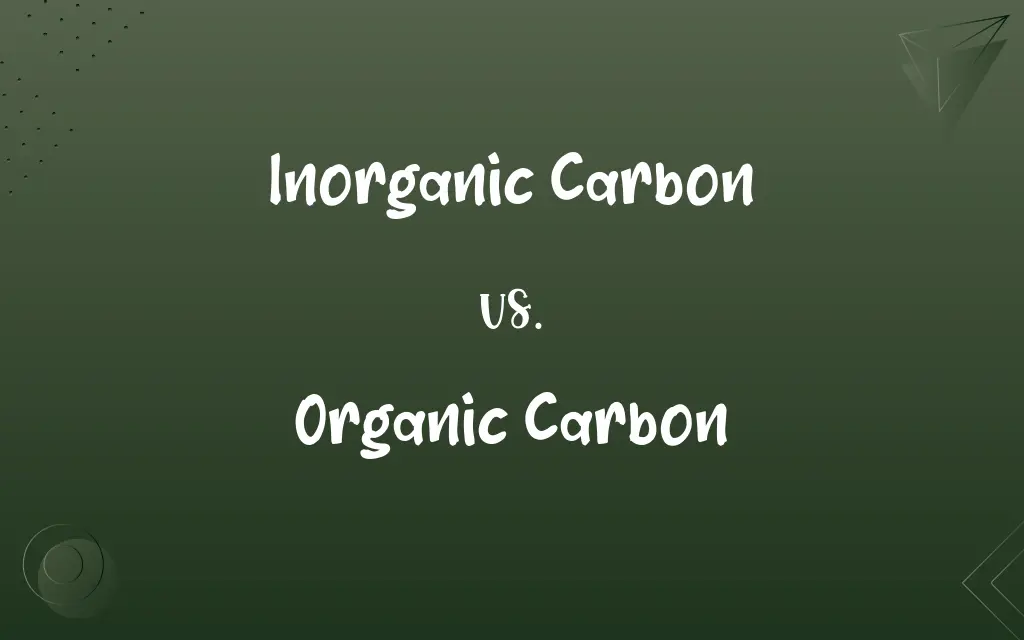
Key Differences
Inorganic carbon primarily exists in forms like carbon dioxide, carbonates, and bicarbonates, typically found in rocks, oceans, and the atmosphere. Organic carbon, on the other hand, is found in all living organisms, comprising essential compounds like carbohydrates, proteins, and fats. While inorganic carbon is often associated with non-biological processes, organic carbon is integral to life, involved in biological functions and energy storage.
Shumaila Saeed
Jan 18, 2024
Inorganic carbon compounds are often simpler in structure, such as CO2 or calcium carbonate (CaCO3). These are common in the Earth's crust and oceans. Organic carbon compounds, like glucose (C6H12O6), are more complex and are produced through biological processes like photosynthesis. Organic carbon sources include plants, animals, and fossil fuels, which originated from ancient living matter.
Shumaila Saeed
Jan 18, 2024
Inorganic carbon is crucial in regulating Earth's temperature and climate, forming part of the carbon cycle through processes like weathering and oceanic absorption. Organic carbon plays a pivotal role in the life cycle of organisms and ecosystems, being a fundamental component of DNA, proteins, and other life-sustaining molecules. Decomposition of organic matter recycles carbon back into the environment, often as inorganic forms.
Shumaila Saeed
Jan 18, 2024
Human activities significantly impact both types of carbon. The burning of fossil fuels releases inorganic carbon (CO2) into the atmosphere, contributing to global warming. Similarly, deforestation and land-use changes decrease the amount of organic carbon stored in vegetation and soil, altering the balance of the carbon cycle. The interplay between inorganic and organic carbon is a critical aspect of climate change discussions.
Shumaila Saeed
Jan 18, 2024
In industry, inorganic carbon compounds are used in manufacturing, construction, and as part of chemical processes. Organic carbon, being the basis of all life, is central to fields like biochemistry, agriculture, and medicine. Understanding the behavior of both inorganic and organic carbon is key to advancements in environmental science, climate change mitigation, and sustainable development.
Shumaila Saeed
Jan 18, 2024
ADVERTISEMENT
Comparison Chart
Source
Non-living, e.g., minerals, atmosphere
Living organisms, e.g., plants, animals
Shumaila Saeed
Jan 18, 2024
Chemical Structure
Simple molecules, e.g., CO2, CaCO3
Complex molecules, e.g., C6H12O6, CH4
Shumaila Saeed
Jan 18, 2024
Environmental Role
Climate regulation, carbon cycle component
Life sustenance, energy storage
Shumaila Saeed
Jan 18, 2024
Human Impact
Climate change contributor (CO2 emissions)
Affected by land use, agriculture
Shumaila Saeed
Jan 18, 2024
Industrial Applications
Cement, manufacturing, chemicals
Pharmaceuticals, food, biofuels
Shumaila Saeed
Jan 18, 2024
ADVERTISEMENT
Inorganic Carbon and Organic Carbon Definitions
Inorganic Carbon
Used in manufacturing processes, like in the production of cement.
The cement industry is a major source of industrial inorganic carbon emissions.
Shumaila Saeed
Jan 04, 2024
Organic Carbon
Organic carbon involved in life-sustaining biological processes.
Photosynthesis in plants converts inorganic carbon into organic carbon.
Shumaila Saeed
Jan 04, 2024
Inorganic Carbon
Inorganic carbon found in sedimentary rocks like limestone and dolomite.
Carbonate rocks often form extensive cave systems.
Shumaila Saeed
Jan 04, 2024
Organic Carbon
Organic carbon forms the backbone of biomolecules in living organisms.
Glucose, a simple sugar, is an essential organic carbon molecule for energy.
Shumaila Saeed
Jan 04, 2024
Inorganic Carbon
Inorganic carbon in the form of carbonate minerals, like limestone.
The White Cliffs of Dover are composed of limestone, a type of inorganic carbon.
Shumaila Saeed
Jan 04, 2024
ADVERTISEMENT
Organic Carbon
Organic carbon preserved in ancient biomass, like coal and oil.
Fossil fuels are rich in organic carbon and used as energy sources.
Shumaila Saeed
Jan 04, 2024
Inorganic Carbon
Inorganic carbon as carbon dioxide in the atmosphere.
Atmospheric CO2 levels are critical for climate modeling.
Shumaila Saeed
Jan 04, 2024
Organic Carbon
Organic carbon component of soil, crucial for fertility.
Healthy soils rich in organic carbon are vital for sustainable agriculture.
Shumaila Saeed
Jan 04, 2024
Inorganic Carbon
Carbon in water bodies, mainly as dissolved CO2, bicarbonates, and carbonates.
Ocean acidification is a result of increased dissolved inorganic carbon.
Shumaila Saeed
Jan 04, 2024
Organic Carbon
Organic carbon in the structure of plants and trees.
Forests are major reservoirs of organic carbon.
Shumaila Saeed
Jan 04, 2024
Repeatedly Asked Queries
Can organic carbon become inorganic?
Yes, through processes like respiration and decomposition, organic carbon can convert back to inorganic forms.
Shumaila Saeed
Jan 18, 2024
What is inorganic carbon?
Inorganic carbon is carbon found in non-living sources like minerals and the atmosphere.
Shumaila Saeed
Jan 18, 2024
Is CO2 considered inorganic or organic carbon?
CO2 is considered inorganic carbon.
Shumaila Saeed
Jan 18, 2024
What is organic carbon?
Organic carbon is carbon found in living organisms and their products.
Shumaila Saeed
Jan 18, 2024
Are fossil fuels organic or inorganic carbon?
Fossil fuels are considered organic carbon, as they originate from ancient living matter.
Shumaila Saeed
Jan 18, 2024
Can human activities affect inorganic carbon levels?
Yes, activities like burning fossil fuels increase atmospheric inorganic carbon (CO2).
Shumaila Saeed
Jan 18, 2024
Is organic carbon essential for life?
Yes, organic carbon is a key component of life, forming biomolecules like DNA and proteins.
Shumaila Saeed
Jan 18, 2024
What is a major source of inorganic carbon emissions?
The burning of fossil fuels is a major source of inorganic carbon emissions.
Shumaila Saeed
Jan 18, 2024
What happens to organic carbon when an organism dies?
It either decomposes, returning to the atmosphere as inorganic carbon, or becomes part of fossil fuels.
Shumaila Saeed
Jan 18, 2024
How do plants contribute to organic carbon?
Plants absorb inorganic carbon (CO2) and convert it into organic carbon through photosynthesis.
Shumaila Saeed
Jan 18, 2024
How do marine organisms utilize inorganic carbon?
They convert inorganic carbon to organic forms, like in shell formation or photosynthesis.
Shumaila Saeed
Jan 18, 2024
What role does inorganic carbon play in the ocean?
Inorganic carbon in oceans regulates pH and supports marine life through the carbon cycle.
Shumaila Saeed
Jan 18, 2024
How is organic carbon stored in soil?
Organic carbon is stored in soil through plant residues and microbial activity.
Shumaila Saeed
Jan 18, 2024
Can inorganic carbon be used in industry?
Yes, it's used in industries like cement and chemical manufacturing.
Shumaila Saeed
Jan 18, 2024
Is limestone an example of inorganic carbon?
Yes, limestone is a type of inorganic carbon in the form of carbonate minerals.
Shumaila Saeed
Jan 18, 2024
Can organic carbon be a pollutant?
In some forms, like methane (CH4), it can contribute to greenhouse gas emissions.
Shumaila Saeed
Jan 18, 2024
Are carbohydrates a form of organic carbon?
Yes, carbohydrates are organic carbon compounds essential for energy.
Shumaila Saeed
Jan 18, 2024
How does deforestation affect organic carbon?
Deforestation reduces organic carbon storage in trees and soil.
Shumaila Saeed
Jan 18, 2024
What is the role of inorganic carbon in climate change?
Elevated levels of atmospheric inorganic carbon (CO2) contribute to global warming.
Shumaila Saeed
Jan 18, 2024
How are inorganic and organic carbon cycled in nature?
They are cycled through natural processes like photosynthesis, respiration, and decomposition.
Shumaila Saeed
Jan 18, 2024
Share this page
Link for your blog / website
HTML
Link to share via messenger
About Author
Written by
Shumaila SaeedShumaila Saeed, an expert content creator with 6 years of experience, specializes in distilling complex topics into easily digestible comparisons, shining a light on the nuances that both inform and educate readers with clarity and accuracy.

















